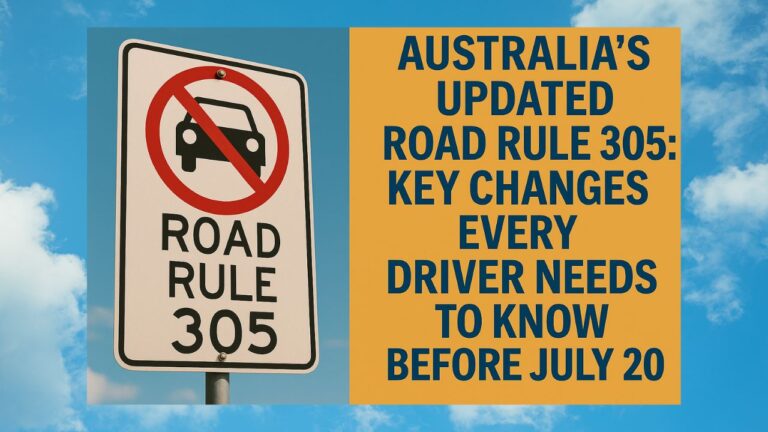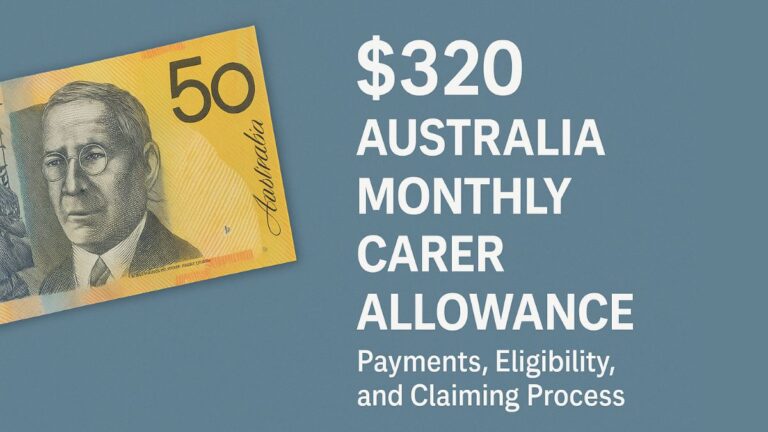Australia $4529 Tax Refund 2025, Check Eligibility, Application and Payment Details
Australia’s tax framework ensures that working individuals are fairly taxed and given opportunities for financial relief when eligible. One of the most notable benefits in the 2025 financial year is the $4,529 tax refund, which serves as a significant return of overpaid taxes for qualifying individuals. This refund is facilitated by the Australian Taxation Office (ATO) and specifically benefits low and middle-income taxpayers.
Many Australians find this refund especially useful in managing cost-of-living pressures, paying down debt, or putting aside money for future needs. While the refund is potentially generous, it is not automatically credited to everyone. Instead, it depends on how much income tax was withheld during the year and the details provided in the individual’s tax return. Accurate filing, honest reporting, and full understanding of the eligibility criteria are essential.
The refund amount a person receives can vary widely, as it is influenced by several factors, including income, deductions, and tax offsets. Understanding how the process works is critical for ensuring the right amount is received and within the expected timeframe.
What Is the $4,529 Tax Refund and Who Can Qualify?
The $4,529 tax refund is a maximum refundable amount that taxpayers may receive if they have paid more in taxes than they owe over the 2024–2025 financial year. This refund is commonly linked to tax offsets such as the Low and Middle Income Tax Offset (LMITO) or similar mechanisms, which aim to support those in specific income brackets.
To qualify for this refund, individuals must be Australian residents for tax purposes, which generally means they live and work in Australia and consider it their permanent home. The refund especially applies to those earning modest incomes, as higher-income earners usually don’t qualify for the full amount.
The amount refunded is calculated after income is assessed and all deductions and offsets are applied. For many working Australians, this refund becomes available during tax season once their annual return has been submitted and processed.
Income Brackets and Refund Outcomes
Your taxable income significantly influences how much of the refund you can claim. Those earning less than a certain threshold typically stand to receive more, while those in higher income brackets may receive a smaller refund or none at all.
Below is a summary of refund possibilities based on income levels:
| Annual Income (AUD) | Refund Eligibility | Estimated Refund Amount |
|---|---|---|
| $18,201 – $45,000 | Full refund likely | Up to $4,529 |
| $45,001 – $90,000 | Partial refund available | Varies (depends on deductions) |
| Above $90,000 | Low or no refund | Minimal or no refund |
Other qualifying criteria include consistent reporting of income, claiming valid deductions, and lodging a tax return on time. Even small mistakes or missing details can affect refund outcomes.
How to Apply for the Refund: Filing Process Explained
Applying for the refund is done through the annual tax return, which taxpayers are expected to lodge each financial year. The most popular and efficient way to do this is through the myGov portal, where individuals can access pre-filled information from employers and financial institutions.
Before lodging the return, it is essential to gather all the relevant financial records. These include income statements from employers, details of interest or dividends earned, and receipts for eligible deductions like work-related expenses or charitable donations.
For those with more complex tax situations or limited experience, hiring a registered tax agent may be useful. Agents can help ensure all applicable deductions are claimed and that the refund is maximised. However, even when working with an agent, the taxpayer remains responsible for the accuracy of the information submitted.
The refund will be directly deposited into the bank account provided during the filing process. Therefore, ensuring that account details are up to date is equally important. Incorrect bank details can cause unnecessary delays or payment failures.
Refund Timelines and Processing Duration
How quickly you receive the refund depends on how you file your return. Generally, electronic filing is much faster than paper-based methods. If you lodge early and your return is error-free, the process can be completed smoothly within a couple of weeks.
Here is an overview of typical processing times:
| Method of Lodging | Estimated Processing Time |
|---|---|
| Online via myGov | 7–14 business days |
| Through a Tax Agent | 2–4 weeks |
| Paper Submission | 6–8 weeks |
Processing may take longer if the return is flagged for review, especially if there are discrepancies in income reporting or deductions. It’s advisable to retain all supporting documents in case the ATO requires further clarification.
How Taxpayers Usually Use the Refund
Receiving a refund of up to $4,529 can be a major financial relief, especially for households managing expenses like rent, bills, and loan repayments. While some individuals choose to spend the refund on immediate needs, others take a longer-term approach and use it to invest or save.
Below are common ways people use their tax refunds:
- Debt repayment: Clearing high-interest credit cards and personal loans
- Daily expenses: Paying for groceries, transport, or medical bills
- Savings: Building an emergency fund for unexpected situations
- Investment: Contributing to superannuation or investment accounts
- Education: Paying for courses, certifications, or school expenses
This kind of financial flexibility allows taxpayers to strengthen their financial health, with the added benefit of boosting economic activity through consumer spending.
Common Filing Mistakes to Avoid
While the process of lodging a tax return is fairly straightforward, many people still make avoidable errors. These mistakes can lead to reduced refunds, delayed payments, or even ATO investigations.
To help ensure a smooth experience, be cautious of the following:
- Failing to report all income: This includes freelance work, investment returns, and rental income.
- Overclaiming deductions: Only claim deductions that are genuine and backed by receipts or records.
- Incorrect bank details: Double-check account numbers and BSB codes before submitting.
- Missing the deadline: Lodging late without an extension can result in penalties and refund delays.
Being aware of these issues can save a lot of time and help taxpayers receive their full refund without complications. It’s also a good practice to start early in the tax season to allow for extra time if issues arise.
The $4,529 tax refund is an important opportunity for eligible Australians to recover overpaid taxes and strengthen their financial wellbeing. While it is not guaranteed for every taxpayer, those who meet the criteria and file their returns carefully may be able to take full advantage of this refund.
By understanding the eligibility conditions, keeping financial records organised, and following proper filing steps, individuals can ensure they don’t miss out on this benefit. Whether it’s used to pay bills, reduce debt, or invest for the future, this refund has the potential to make a meaningful impact in 2025.







